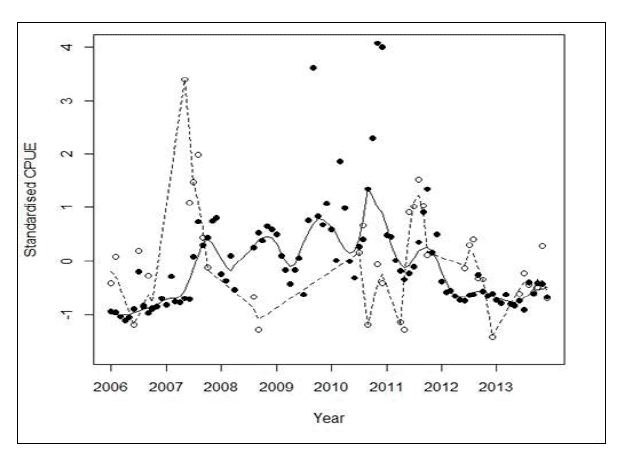Consultation on New Controls in the Queen Scallop Fishery in ICES Divisions VIa and VIIa
Seeking views on introducing new management measures in the Queen Scallop fishery in ICES divisions VIa and VIIa.
7. Health of Queen Scallop Stocks
A significant impediment to the development of appropriate management for the fishery is the lack of detailed information on catches (other than quantity landed) or stock assessments relating to the whole stock area. Information which is typically used to underpin and inform management measures.
However, there are various sources of information that are indicative of the status and trends of queen scallop stocks and fisheries. These are summarised below:
- UK data: National fisheries administrations collect and collate fisheries data, including vessel numbers, target species and landings by weight and value. These have been used to produce Figures 2 and 3 that indicates the long-term historical trend in European queen scallop fisheries, and the unprecedented level of landings in the period 2011 to 2013.
- Isle of Man data: the Isle of Man Government and its associated scientific advisors (University of Liverpool, up to 2006, and Bangor University, 2007 - present) have conducted stock surveys and assessments for queen scallops in Manx territorial waters for many years providing a long-term data set to enable comparison of annual stock abundance. Since 2012, stock assessments have been conducted which have resulted in scientifically-advised annual quotas.
These indicate an unusually high recruitment event between 2007 and 2009, associated with increased catches, but followed by precipitous stock and recruitment declines since 2010 [6] . Unfortunately, fishing effort and landings did not decline concurrently, resulting in significant overfishing and stock collapse. The trends in vessel numbers and landings also appear to be replicated in data from outside the Manx territorial sea area (Figures 2, 3 and 4) and, although stock status has not been assessed, available evidence would suggest stock declines have occurred.
- AFBI (Agri-Food and Biosciences Institute): The increasing importance of queen scallops to Northern Ireland over recent years resulted in the start of annual surveys from 2013, as well as detailed analysis of existing UK and Isle of Man fisheries data across the species' distribution. Survey results conducted in UK waters (Divisions VIa and VIIa) are in broad agreement with Isle of Man assessments.
Importantly, two independent assessments of Catch Per Unit Effort ( CPUE) trends derived from UK (Figure 5) and Irish vessels [7] show variation over the time series and a declining trend since 2011-2012, indicating reducing numbers of queen scallops caught per unit of fishing effort over time.

Figure 5 Mean standardised CPUE trend for Division VIIa with smoother fitted showing general decline. Solid symbols are for dredges and open circles are for otter trawls. NOTE: some catch data missing, so CPUE values likely to be lower than expected (Source: AFBI).
- Industry information: anecdotal industry-derived information on declining stock status instigated the management working group initiative. Throughout the process general concern about stock levels, increasing and unrestricted levels of fishing effort and lack of comprehensive scientific data were voiced. Improved management has been specifically requested by two of the main scallop fishing representative organisations ( UK Scallop Association and the Scottish Fishermen's Federation), and industry working group representatives have supported the conclusions and outcomes of the process, all of which may be considered indicative of industry concerns about the health of queen scallop stocks.
In summary, the reasons for pursuing the introduction and development of longer-term management measures in the queen scallop fishery are as follows:
- Evidence of uncontrolled and increasing vessel numbers, fishing effort and high landings of the species; recently at record levels,
- Strong scientific evidence of subsequent stock and recruitment declines and decreasing CPUE in major parts of the fishery area,
- Lack of management measures in the queen scallop fishery, with the exception of the Isle of Man,
- Reports and concerns about declining stock status expressed by industry,
- Potential long-term economic and sustainability benefits of developing more effective and consistent management measures across the multi-jurisdictional distribution of the species,
- Potential to improve control of fishing effort across shellfish fisheries,
- The need to address European Union Marine Strategy Framework Directive requirements to manage key commercial species around sustainable limits.
Contact
There is a problem
Thanks for your feedback